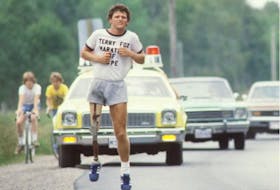Last week I was driving downtown and stopped at a light. A panhandler, who appeared to be on drugs, approached my vehicle and I went into a full-blown panic attack, couldn’t breathe and felt trapped. This has happened before but it’s occurring more and more as of late. I can’t stop driving but I’m terrified of having another one, what can I do?
Jenny
Thanks for writing in about this, you’d be surprised by how many people share your concerns.
Let’s start by clarifying the terms, to consider what is actually going on. An anxiety attack is linked to feelings of distress and worry about a situation that you’ve identified as a threat. A panic attack is characterized as an experience of intense fear that can paralyze or disconnect us from our bodies. It also tends to occur out of the blue without a trigger. I suggest you do your own research and seek out professional help to identify what’s happening so you can most effectively treat it.
In the meantime, let’s explore a few body-mind practices you can apply right away so you can regain some confidence and calm behind the wheel. First of all, I’ve spoken about eustress before and I’ll remind you again not all stress is harmful to our health. After all, a small degree of driving stress helps you to stay attentive while navigating powerful machinery. When stress shifts from that of excitement or alertness to severe distress, we know we’ve got some issues in our tissues. What’s more, once you’ve had an emotional attack in the car, your brain quickly associates the car as a trigger. Therefore, the faster you can rewire this association, the easier it will be to move through it.
Here are three practices you can try the next time you feel an attack surfacing:
Soothe your senses
Keep a small comforting item nearby you can reach for while waiting for a light to turn green (for example, a smooth stone, a crystal, a cozy sweater, even a squishy toy). You can also have a relaxing playlist at the ready for moments when you start to feel elevated.
Practice deep, full breathing
Incorporating a breathing practice for even five minutes a day will train your body to access your breath when you start to hold it. Remember that saying that it’s best to teach a firefighter how to put out fires before they actually happen? Practice makes progress so let’s start now by inhaling for a count of five, pause, and let the goodness of your breath seep into your system. Then exhale a bit longer, maybe to a count of seven to activate the relaxation response in the body.
Be prepared
Before you jump in the car and take off to your destination, consider your route so there’s no risk of getting lost and give yourself plenty of time to get there so you’re not feeling pressured by time. You can also give yourself permission to drive around the intersections where panhandlers tend to frequent until you get to the source of your angst.
Blair
Sounds like it was a frightening situation for you. These are uncertain times and many people are experiencing higher than usual stress when their baseline was high to begin with. With a history of these attacks, your system might already be on high alert, which can add to the likelihood of having more attacks in the future.
Let’s explore the tension in your body by taking a big breath in and scrunching your shoulders up toward your ears. Tighten, tighten, tighten, and then relax your breath and your shoulders, down, down, down. Notice how you feel now in this natural resting position. You may observe that your shoulders and neck are normally clenched and ready for defence, so this quick exercise will help to train your body to relax and deepen your breathing. You can do this anytime you feel an attack coming on to break up the tension pattern that may be contributing to your attacks in the first place.
Next, let’s lean into the state of panic you feel when you’re sitting at the light. What is the main fear? Is it realistic? If so, take action to create a safer driving experience like reporting the panhandler to the police, or locking your doors. If it’s not realistic, try using your rational mind to reassure your fearful self. You can do this through the use of affirmations (by creating a statement in advance) so it’s ready to repeat the next time you’re in the situation. A few statements of reassurance might be “I am safe and relaxed behind the wheel” or “I confidently go with the flow of traffic.”
Finally, it’s crucial we all take extra care of our mental and physical well-being at this time, so I encourage you to incorporate stress-relieving practices into your daily life. Some examples are: Mindfulness, movement, time in nature, warm baths, time with friends, listening to soothing music, inspiring screen time, therapy, etc.
Good luck and stay safe!
Have a question for Jenny and Blair? Send all inquiries to: [email protected]









